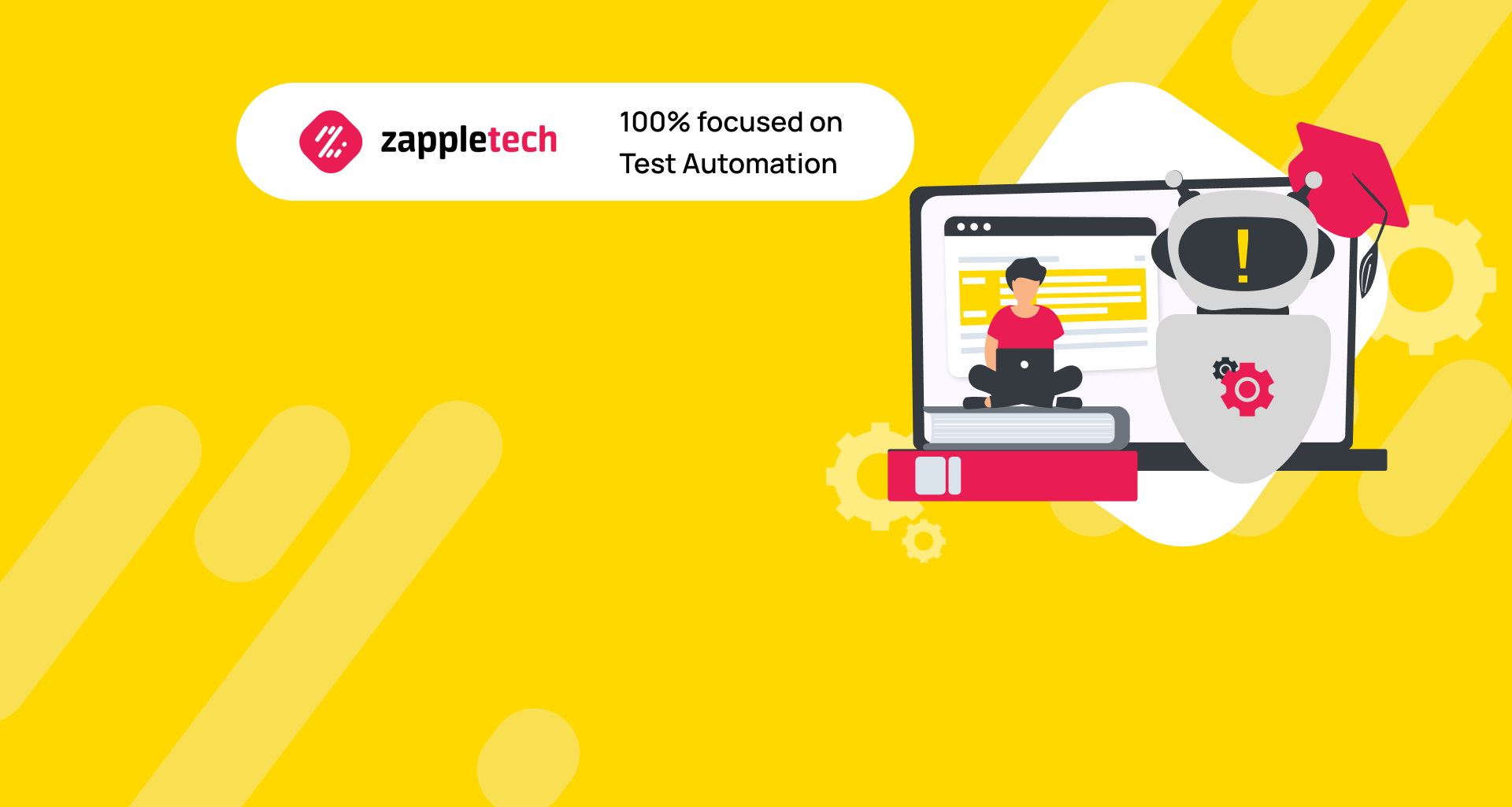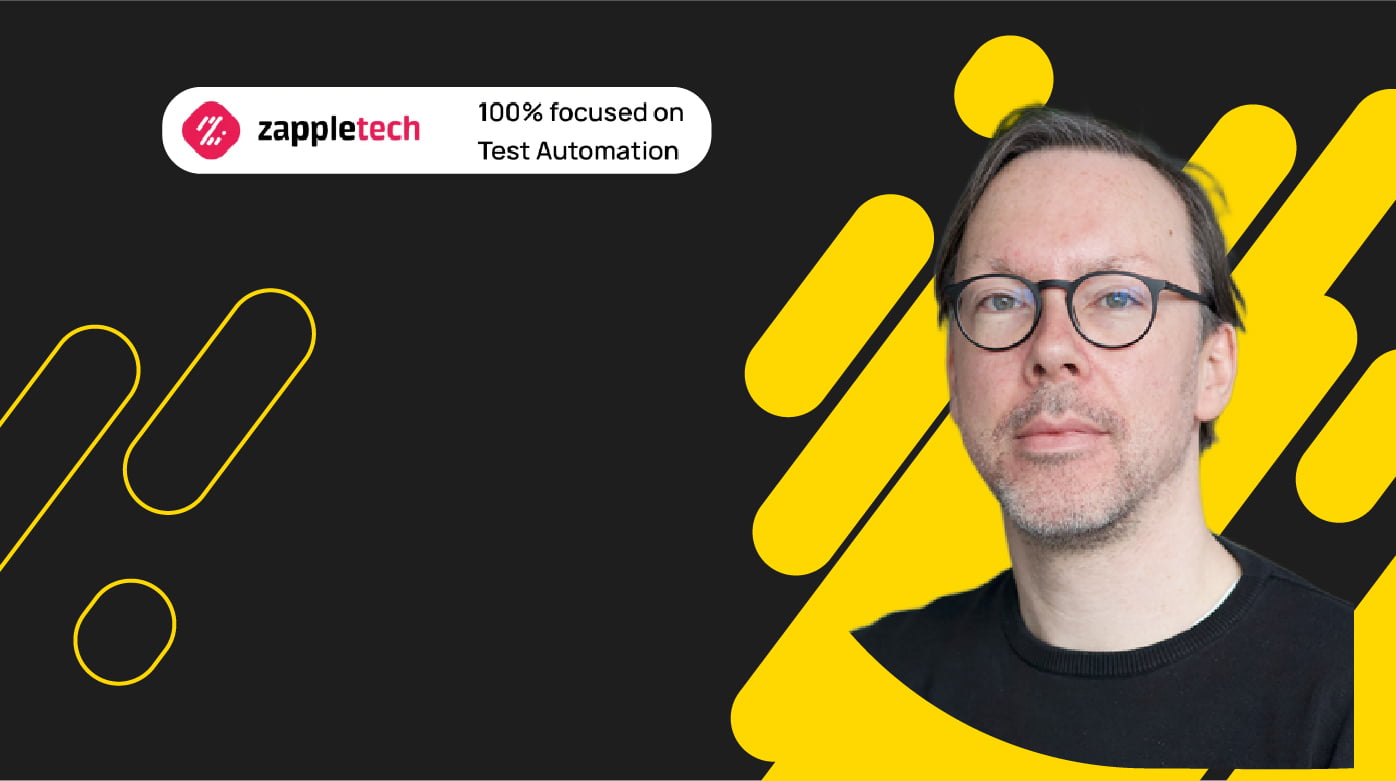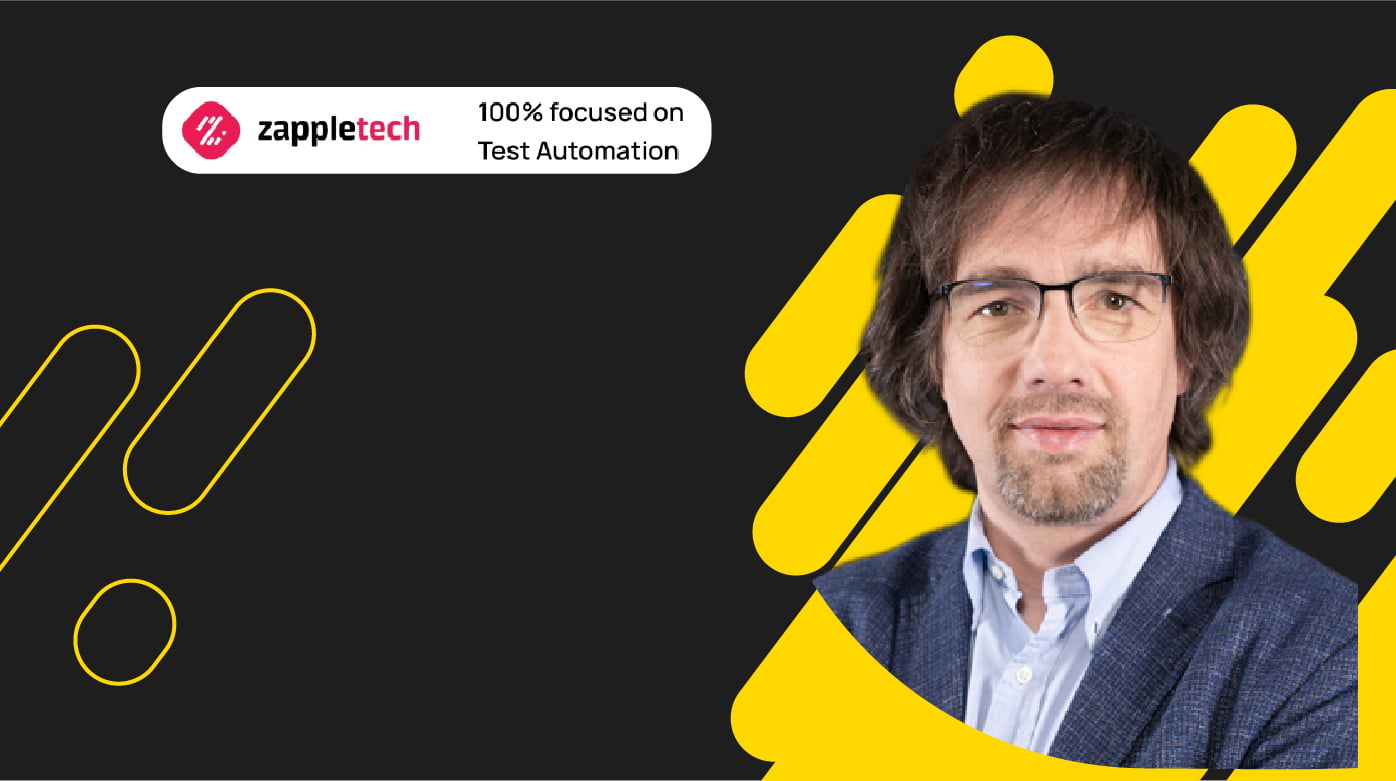The growth of the e-learning market has been significantly driven by the Covid-19 pandemic and the ongoing global digitalization. According to Statista, the total expenditure on online courses is projected to reach $243 billion by 2022, highlighting that platforms for continuing education will remain in high demand throughout the next decade. An analytical study by ClassCentral reveals that distance learning has already attracted over 180 million students worldwide, who have completed more than 16,000 courses. These numbers are indeed impressive, but the success of digital course websites hinges on more than just content delivery—it’s also about ensuring a seamless user experience, which is where QA testers, software developers, and content specialists play a critical role.
Make automation testing a regular part of your development cycle. By integrating tests continuously, you can quickly identify and fix issues, keeping your e-learning platform reliable and up-to-date with minimal downtime.Mikhail BodnarchukCDO, ZappleTech Inc.
A crucial aspect of maintaining high standards in online education is the thorough e-learning testing of these platforms. This process ensures that learners can access and complete their courses without any technical issues, thus maintaining the credibility and effectiveness of the digital learning environment. But as the volume of courses and users continues to grow, manual testing alone becomes insufficient. This is where e-learning automation testing comes into play, enabling faster, more efficient validation of the platform’s functionality across multiple devices and scenarios.
ZappleTech experts have thoroughly researched the topic of e-learning testing and collected some of the most insightful materials for you. In this article, you will explore the history of digital courses, delve into the Software Quality Assurance (SQA) process for e-learning platforms, and discover the advantages of automating these tests. We promise it will be an interesting and informative journey into the world of digital education!
Table of Contents
E-Learnings Platforms: A History of the Dawn of Digital Courses
The history of e-learning platforms can be traced back to the early 20th century. It is commonly believed that the first learning systems date back to 1924, when primitive devices were used to test the concept of distance learning in a stationary mode. Although these early attempts were rudimentary, they laid the groundwork for the development of digital courses as we know them today.
The first significant step in virtual learning came with the release of the Macintosh computer in 1984. This innovation introduced thousands of users to the Internet, opening up new possibilities for online education. Despite the limitations of floppy disks, which could store only a small amount of data, and the challenges of real-time communication with teachers, these early systems captured the imagination of learners and educators alike.
By 1995, the first traditional digital learning systems, or Learning Management Systems (LMS), began to emerge. These systems allowed for the structured delivery of content and assessments, marking a new era in education. Over time, LMS platforms have evolved, incorporating more sophisticated features and becoming integral to e-learning testing and the broader field of e-learning automation testing.
The year 2010 marked a turning point in the world of virtual learning. Social networks such as YouTube, where educational videos were widely shared, and platforms like Twitter and LinkedIn became essential communication tools for learners and professionals. During this period, traditional LMSs transitioned into comprehensive virtual products, offering a wide range of features and tools that continue to be popular worldwide. Additionally, the Massive Open Online Course (MOOC) was born, revolutionizing access to education by providing free or affordable courses to a global audience.
In the wake of the Covid-19 pandemic, online learning has become an integral part of daily life for many people. E-learning platforms have enabled millions to continue their education, upskill, and even change careers. The demand for robust e-learning testing and e-learning automation testing tools has grown alongside this shift, ensuring that online courses are reliable, efficient, and effective for learners around the world.
E-learning test: challenges and tasks for SQA
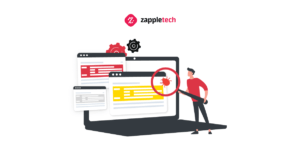
With the rapid development of e-learning systems, it has become essential to introduce new functions, content, and control logic that cater to diverse learning needs. However, as with any IT product, e-learning platforms face a myriad of design and delivery challenges. These challenges can significantly impact the quality and effectiveness of the training experience.
One of the primary challenges in e-learning testing is ensuring that the code is correct and functions as intended across various devices and platforms. Incorrect code can lead to malfunctioning features, which can disrupt the learning process. Additionally, irrelevant or outdated descriptions and errors in text and controls can confuse learners, diminishing their ability to absorb and retain information.
E-learning automation testing plays a crucial role in addressing these issues. By automating the testing process, QA teams can efficiently identify and rectify problems before they impact users. Automation not only speeds up the testing process but also ensures consistency and accuracy, which are vital in maintaining the integrity of e-learning systems.
Moreover, e-learning testing involves verifying that all multimedia elements, such as videos, animations, and interactive content, function seamlessly. These elements are integral to creating an engaging and effective learning experience. Any errors in their delivery can lead to frustration and disengagement among learners.
Another critical aspect of e-learning automation testing is checking the user interface (UI) and user experience (UX). The interface must be intuitive and easy to navigate, allowing learners to focus on the content rather than struggling with the platform. Automation testing helps in identifying UI/UX issues quickly, ensuring that the e-learning platform is user-friendly and accessible to all learners.
In summary, e-learning testing is essential in overcoming the numerous challenges that arise in the development and deployment of e-learning systems. By incorporating e-learning automation testing, QA teams can enhance the quality and reliability of these platforms, ultimately improving the user experience and the effectiveness of the training provided.
Key points for a successful launch of an online course:
- Optimization for different devices. Not everyone uses modern devices to gain knowledge. Adapting to all specifications is a difficult but feasible task.
- Grammar and lexical errors. It is very striking and casts doubt on the competence of the course author. To solve this problem, copywriters should be involved.
- Design and interface. Convenience is a priority in such systems. Attractive design catches users no worse than high-quality materials.
Easy presentation. The low rate of successful passing of tests directly depends on the perception of information. The easier the material is presented, the better the students master it. - Logical elements and links. The content used in the program must be clickable, in good resolution, and well-integrated into the interface. The user experience and the success of the course depend on it.
- Relevance of information. Why do people buy access to training programs? Of course, to get maximum useful data and relevant knowledge.
It is the minimum required for a digital platform release. It is enough for a full-fledged MVP launch on the market. But before releasing a product, you need to make sure that the material is relevant and consumers won’t have problems with the software. It is where SQA and testing experts come to the rescue.
Begin your e-learning automation testing with a few critical test cases and gradually expand as you gain confidence and see the benefits. This approach helps manage complexity and ensures a smoother transition from manual to automated testing.Mykhailo PoliarushCEO, ZappleTech Inc.
QA Tasks Before Release
As you know, testing is the foundation of the viability of any IT product. Platforms for digital user learning are no exception. Here the main emphasis is on quality presentation and correct interface operation. That’s why the main tasks for testing are:
- Checking the solution’s performance, its uninterrupted operation, and the load on the consumer’s system.
- Proofreading of texts, correction of mistakes: descriptions, FAQs, and answer options.
- Updating content and its quality. Image resolution, video and link processing.
- Testing the interface, its compliance with the described blocks, and output relevance.
- Investigation of user situations in non-standard scenarios and variations.
- Testing for adaptability to various systems, screens, and resolutions.
Doesn’t seem difficult, right? The main goal is to identify all bugs before release, ensuring the best user experience and maximum audience response. So where do you start your QA process? Let’s figure it out.
Software testing learning websites: automation, manual testing, tools and steps for QA implementation
When it comes to software testing learning websites, particularly those focusing on e-learning platforms, understanding the nuances of both automation and manual testing is crucial. E-learning platforms, especially those deployed as web apps, present unique challenges that require a blend of traditional and modern testing methods. Since most digital learning platforms are cloud-based and accessible from various devices, ensuring their functionality, security, and usability across multiple environments is paramount.
To achieve this, incorporating e-learning automation testing into your QA strategy is essential. Automation testing can significantly reduce the time spent on repetitive tasks, allowing QA teams to focus on more complex scenarios. However, it’s important to remember that not all aspects of e-learning platforms can be automated. Certain features, such as user experience and interface responsiveness, often require manual testing to capture nuances that automated scripts might overlook.
For a comprehensive approach, prepare test cases that combine both e-learning automation testing and manual testing right from the start. This preparation will streamline your QA processes and prevent disruptions during development sprints. Additionally, having a clear strategy that outlines when to apply e-learning testing techniques can lead to more efficient and effective testing cycles, ensuring that your platform meets the highest standards of quality.
By balancing both e-learning testing methods, you’ll be able to address potential issues early, providing a seamless and reliable learning experience for users across different devices and platforms.
When to start an e-learning test?
As with all projects, it is best to implement SQA from the early development stages. It will save your time and money, and the released IT product will initially be of high quality, increasing the company’s income. For the sake of fairness, we note that testing can be started at any stage, and it will be profitable anyway.
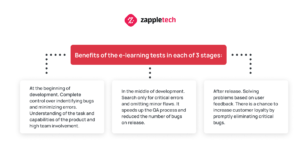
The time when the search for errors begins is not a critical factor. You can benefit from any situation if you solve your tasks correctly. But we, the ZappleTech team, still recommend starting QA at the beginning of development to avoid problems in the future and not risk your reputation.
Automation: what exactly are we optimizing?
Let’s mentally decompose the main components of a digital learning platform in a virtual space: server side, framework, interface, design, and content. Which of these should we automate in tests? Perhaps we will focus on the first three components:
- Check the server part with any suitable tool, focusing on request processing speed and the relevance of the values returned from the database.
- Automate the framework: from control buttons to data input/output fields. It is vital to eliminate all errors related to logical elements.
- Check the design by analogy with the interface: focus on performance, fails with textures, and errors when rendering some elements.
Use cases are also included in this list. It is like classic web application testing when everything possible is automated and parallelized.
Tools for QA Automation and Parallelization
In one of the previous articles, we discussed tools for test automation and parallelization on virtual machines and cloud servers. Now let’s focus on three tools optimal for the e-learning test. We use them ourselves and recommend them to our colleagues:
- Selenium is one of the best tools for automating web app checks. Convenient script syntax allows you to adjust scripts for any test.
- Cypress is a modern solution for QA engineers. It allows for creating custom algorithms from scratch or recording them from the screen, increasing the tool’s flexibility.
- Playwright is a cross-platform product that supports all browsers and systems. It solves any tasks related to end-to-end testing of web applications.
This list is optional for every tester. We just recommend things we use on our own. Of course, to use Selenium, you need a background and some training, but the spent resources are offset by the demand for trained specialists in the IT market.
